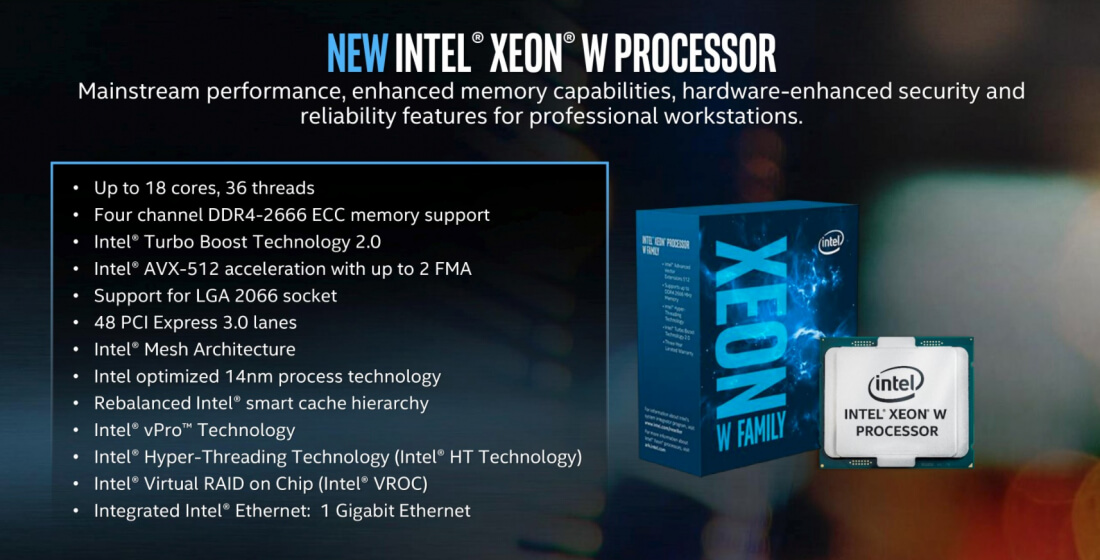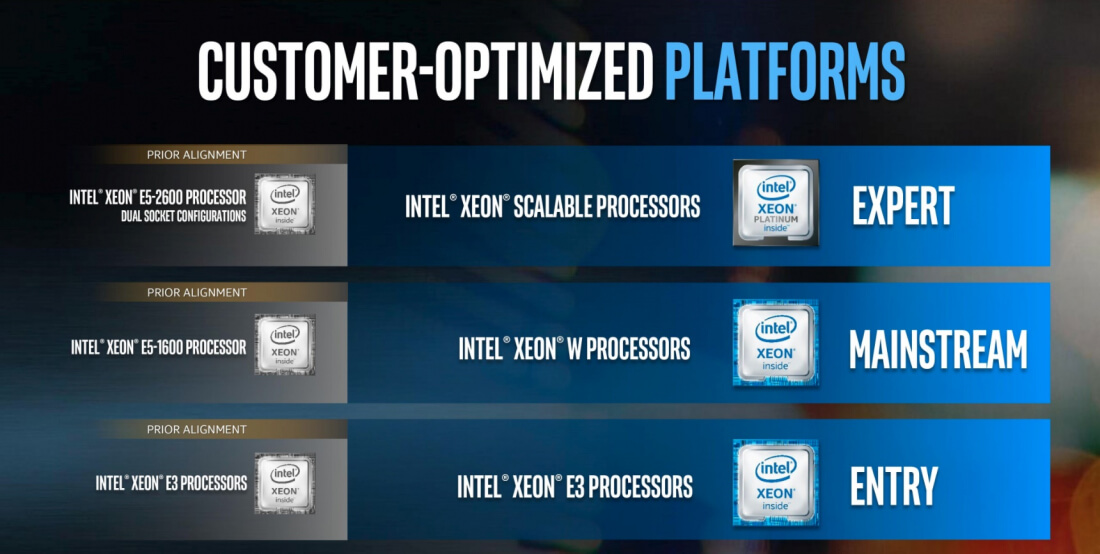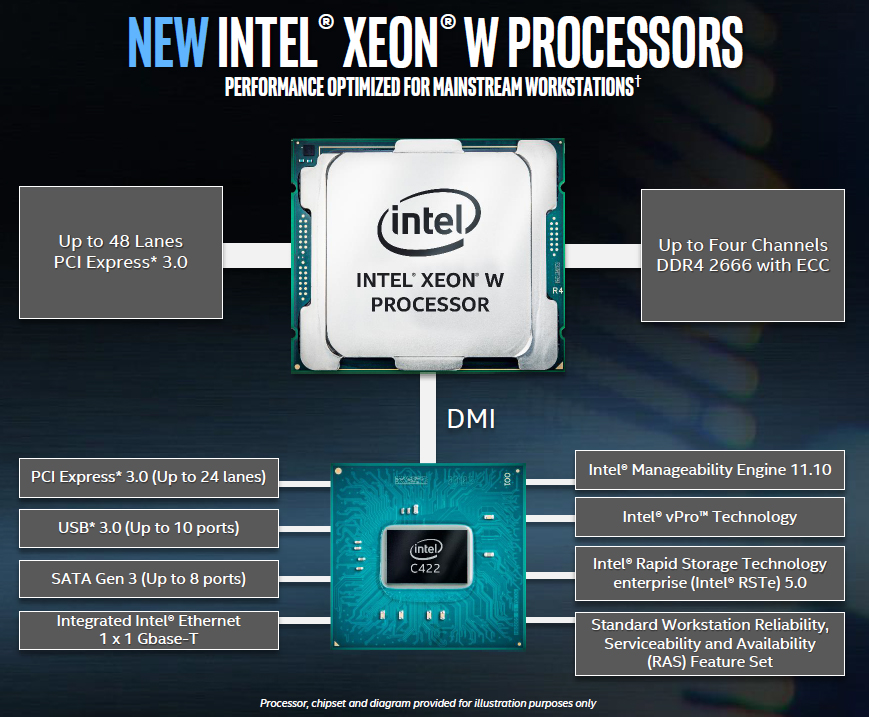
Ever since AMD launched their Epyc line of workstation and server CPUs, Intel has been feeling the heat in the high-performance chip market. They launched the Xeon Scalable Processor line as part of the Skylake-SP architecture but that was directed solely at data center users. This, along with confusion due to a new naming convention, has made workstation users feel left out.
Today, the chipmaker announced its new Xeon-W line of CPUs which aims to bridge the gap between consumer and server processors. This means Skylake-SP Xeons are coming to LGA 2066.
Previously, Intel's three-tier approach to workstation and server hardware consisted of the Xeon E3 line on the bottom, the Xeon E5-1600 in the middle and the Xeon E5-2600 line at the top. The Xeon-W announced today will replace the mid-tier Xeon E6-1600 while the Xeon Scalable Processors have replaced the E5-2600.

Historically, the upper two tiers were very similar and shared the same socket. With Skylake-SP moving up to the LGA 3647 socket (but the others staying at LGA 2066), a feature gap between consumer and enterprise was formed. Intel is launching Xeon-W today to close that gap.
So what new features are coming with this launch? An easy way to describe it is creating Xeon versions of the Skylake-X (Core i9) family. Professional features like vPro, AMT and extended memory support are all integrated now. Although it shares the same LGA 2066 socket as the X299 consumer boards, Xeon-W likely will not be compatible. Instead, you will need a C422-compatible motherboard to run one.

Xeon-W will have support for up to 18 cores / 36 threads, 48 PCIe lanes and 512GB of DDR4 RAM. Intel is launching eight different SKUs with pricing starting at $294 for 8.25MB of L3 cache. We don't know the exact pricing for the highest two SKUs but expect something in the neighborhood of $2,000 to $2,500. The top six CPUs will have a TDP of 140W while the bottom two will run at 120W.
Until benchmarks start to show up, we can only speculate on Xeon-W's performance against AMD's Ryzen and Epyc lines. AMD appears to have the edge in terms of core count and PCIe lanes but Intel claims better single-threaded performance and higher clock speeds.
More information about the top two SKUs will be released in Q4.
https://www.techspot.com/news/70775-intel-unveils-xeon-w-line-cpus-brings-skylake.html